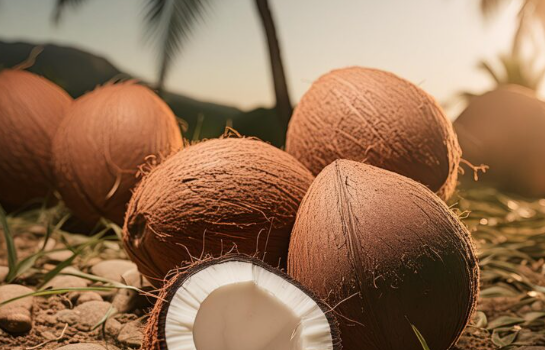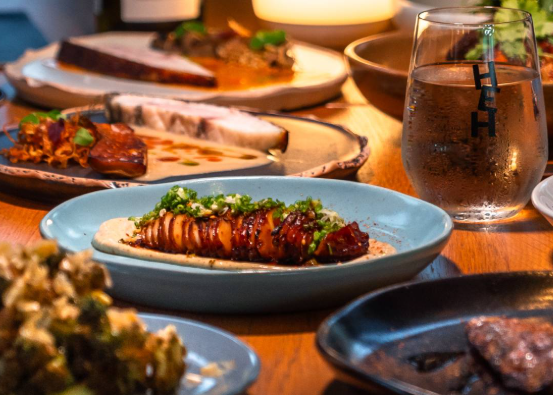
Coconuts are a staple in many parts of the world, especially in tropical regions like Thailand. Whether you’ve enjoyed coconut water from a young coconut or used coconut milk in your favorite dish, there’s so much more to these versatile fruits. From harvesting to processing, let’s dive into the many aspects of coconuts and how they’re used.
Dehusking and Preparing Coconuts
When it comes to opening coconuts, I’ve taken on the self-appointed title of “coconut wrangler,” as it sounds much more exciting than the traditional “coconut opener.” The process starts with dehusking, which is often a team effort. I typically take the lead, using a metal prying tool to make a few jabs around the coconut until the husk loosens. Once it’s loose, I pass it over to the rest of the team, who finish the dehusking with sharp coconut cleavers. The husks are then discarded, often repurposed for things like fueling stoves or crafting hanging plant pots.
Brown Coconuts and Coconut Milk
Brown coconuts, which are more mature than their green counterparts, are commonly used for coconut milk. These coconuts, having fallen from the tree and matured, are cracked open, and the water inside is discarded as it’s no longer suitable for drinking. The real treasure is the thick, fleshy pulp that coats the inside. To make coconut milk, we grate the pulp and mix it with hot water, then strain it through a sieve. The first squeeze, called “Hua Kati,” is the richest and most coconut oil-laden, perfect for cooking. The second squeeze, “Hang Kati,” produces the more liquid coconut milk used in curries and desserts. If left to sit, the milk thickens to form coconut cream, a richer version of the milk that’s great for desserts.
Bulk Processing for Large Quantities
While the traditional method of making coconut milk works great for small batches, it’s far too time-consuming when you’re dealing with large quantities, like the 60 coconuts I processed for a village ceremony. In this case, we take a trip to a local processor. The process is similar but done with machines, which quickly grate the coconut pulp and squeeze out the milk. In less than an hour, we leave with bags of coconut milk, ready for use in feeding the crowd. This method is far more efficient than doing everything by hand.
Green Coconuts and Coconut Water
Green coconuts, or young coconuts, are harvested before they mature. These are the ones commonly seen at markets, where they’re hacked open to reveal the sweet, refreshing coconut water inside. This liquid, which sloshes around when you shake the coconut, is delicious and hydrating. While green coconuts don’t provide the thick pulp needed for coconut milk, the water is perfect for drinking. Opening them is simple: just slice off the top and insert a straw.
Roasted Coconuts
Roasted coconuts are another variation that’s quite popular. These are young coconuts, stripped down to their shell and roasted over hot coals for about 20 minutes. The result is a sweeter coconut water and soft, easily separated flesh. This makes roasted coconuts a great dessert option, often served with coconut ice cream and various toppings like peanuts, sweetcorn, or jelly. To drink the coconut water, you simply pierce one of the eyes and insert a straw. The roasted coconuts are easy to distinguish from green coconuts by their brown shells and occasional scorch marks.
Coconuts Inside Coconuts
Occasionally, coconuts begin to sprout when left on the ground for an extended period. This sprout forms inside the shell, and while it’s edible, it’s not the most flavorful or appetizing. The texture is spongy and unpleasant, often described as cotton-like, and many people choose to discard the sprout. However, the pulp of these coconuts can still be used for making coconut milk.
Palm Wine and Palm Sugar
In addition to the fruit, other parts of the coconut tree are used to produce products like palm wine and palm sugar. Palm wine is made by collecting sap from the young coconut flowers. This sap is naturally sweet and can ferment to create a mild alcoholic beverage. The best palm wine is distilled into a stronger liquor, often referred to as palm whisky. Palm sugar, on the other hand, is made by boiling down the sap to a thick syrup, which is then allowed to harden. This sugar is commonly used in Asian cooking and desserts, adding a rich sweetness to dishes.
Collecting Coconuts
Coconuts are typically collected either by waiting for them to fall or by using pruning poles to chop them from the trees. In some regions, especially in the southern parts of Thailand, macaque monkeys are trained to climb the trees and throw the coconuts down. The process of collecting coconuts can be risky, as falling coconuts can cause injuries. Some areas even prune the trees to avoid accidents, as “death by coconut” is a genuine concern.
From harvesting to processing, coconuts play an integral role in life across many tropical regions. Whether you’re enjoying the sweet water from a young coconut, using coconut milk in cooking, or savoring a roasted coconut dessert, the possibilities are endless. The coconut is truly a gift from nature, providing a range of products that are both nutritious and delicious.












